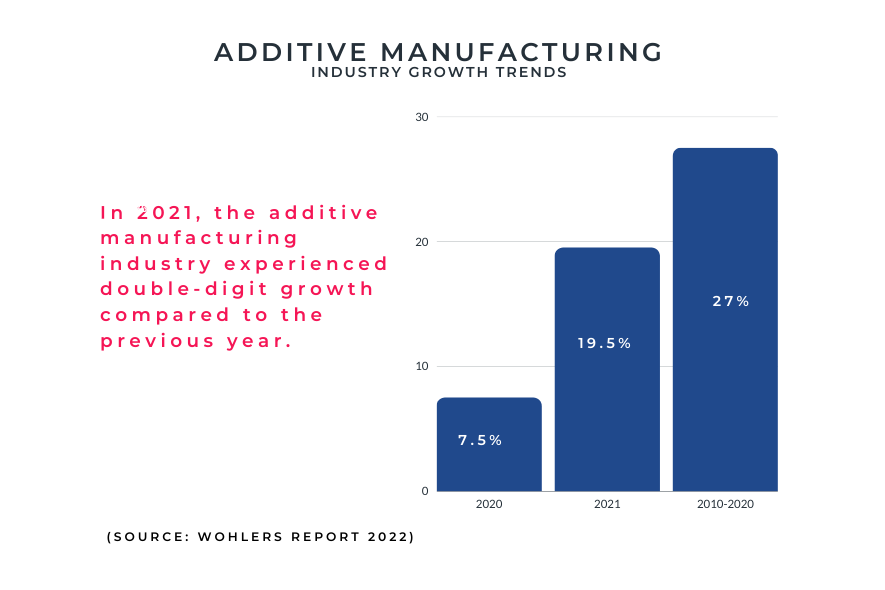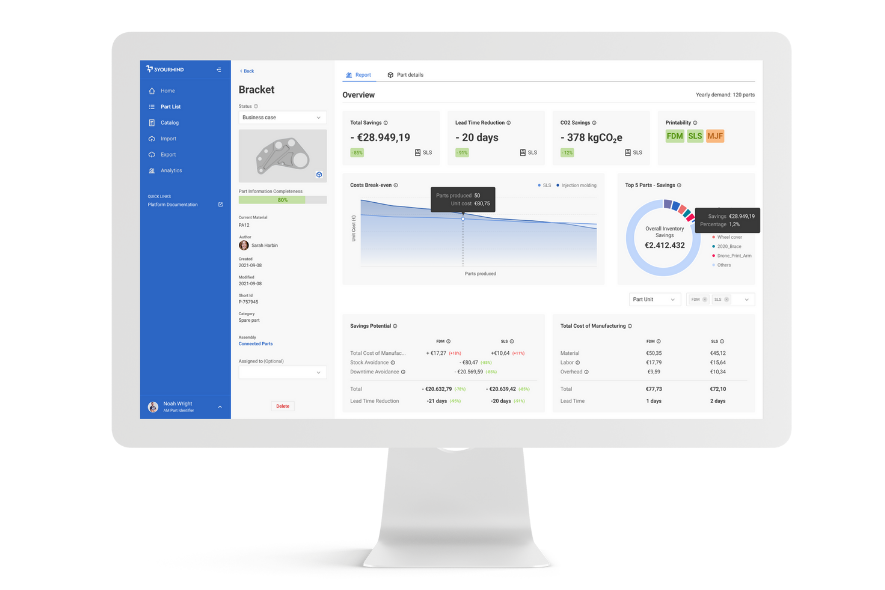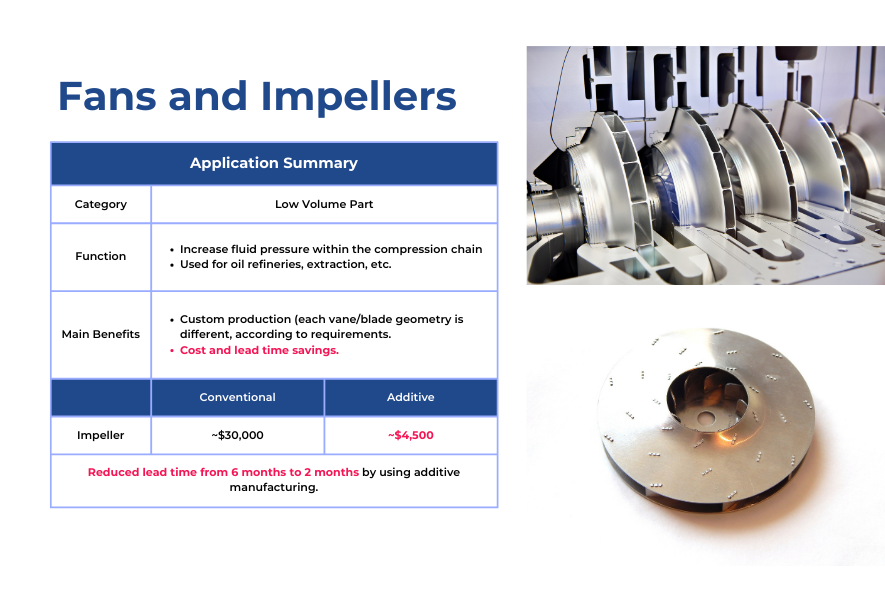Manufacturing today is caught between its past and its future. Battle-tested methods of manufacturing are well understood and replicable, but fragile supply chains, aging equipment, and diminishing skilled labor are prompting manufacturing to embrace the future – a future that includes additive manufacturing.
In this article, we’ll discuss drivers for additive manufacturing adoption and provide a real-world example of a successful application in the energy sector.
The Market Demands Change
The manufacturing sector continues to show its support for additive technology. According to the 2022 Wohlers Report, additive manufacturing grew by 19.5% in 2021, rebounding from 2020’s pandemic-induced 7.5% growth. Although the effects of the global recession on additive manufacturing remain to be seen, data from the last decade demonstrates additive’s 27% growth as no fluke.
But what’s driving this?
One response is the dilemma faced by global industries like automotive, defense and aerospace, energy, and transportation, whether ‘to make or buy’ parts. Decades of outsourced manufacturing have created a culture of cost-based supply chains. Still, as the COVID-19 pandemic demonstrated, fragile, globalized supply chains can make part procurement tenuous, especially for equipment facing obsolescence. This prompts a shift from cost-based to risk-based sourcing decision-making processes. A poll on global manufacturing companies found that 68% listed improved resilience and agility as a top business priority in the coming years.
In this respect, procurement supply chain managers look to additive manufacturing with keen interest regarding its capacity to decentralize and potentially reshore manufacturing to produce spare and critical parts closer to their end users.
Current Success and Future Implications
In the last 40 years, additive manufacturing technology has grown by leaps and bounds to rival traditional manufacturing processes. But whereas the first several decades focused on the development of the technology and its design freedom, the next chapter for additive manufacturing will focus on adoption by major manufacturers in critical industries like defense and aerospace, transportation, and energy.
Although additive won’t replace traditional manufacturing soon, we see a preference for additive to address problems like long-production lead times, spare parts obsolescence management, and stock optimization. For industries like those mentioned previously, procuring spare parts produced using additive manufacturing can speed up time to market, reduce warehousing costs and liabilities, and minimize operational downtime by producing parts exactly when and where they’re needed. A recent report from EY suggests that up to 15% of existing stock-keeping units could be produced additively within the next five years.
However, part qualification is currently one of the greatest challenges impacting the widespread adoption of additive manufacturing. Understanding which parts are suitable for additive manufacturing and the skills to qualify them for print production is limited to engineers with specialized knowledge of additive manufacturing. Here, software like 3YOURMIND can be a powerful solution to quickly identify parts with the strongest technical and business applications and assist in pre-qualification efforts to help engineers qualify more parts in less time.
Use Case: Fans and Impellers in the Energy Sector
Low-volume fans and impellers used in oil extraction and refinery activities demonstrate significant performance, time, and cost opportunities that can be achieved through additive manufacturing.
Whereas conventional manufacturing methods require six months of production lead time and cost upwards of $30,000/part, we’ve seen additively manufactured fans and impellers reduce production lead time by up to four months and cost 85% less per unit when produced for low-volume. In this example, additive manufacturing provides oil and gas companies with cheaper parts and increased operational capacity, generating more revenue and increased consumer availability.
It’s an Exciting Time to Be a Part of Additive Manufacturing
At 3YOURMIND, we work hard to deliver software solutions that address the full additive manufacturing value chain, including part screening and business case analysis, part qualification management, digital inventory, and production management.
3YOURMIND addresses companies’ current needs to produce spare parts quickly while enabling advanced manufacturing technologies and data-driven decision-making to create new parts faster, lighter, and with cost-saving potential.
With 3YOURMIND’s easy-to-use, continuous data platform, manufacturers can communicate and distribute production jobs to approved suppliers. As a result, companies can increase fleet availability and reliability, enabling more resilient supply chains and reducing operations and overstock costs.
To learn more about how 3YOURMIND is helping customers procure more parts using AM, contact us, or visit us at booth 112 at Additive Manufacturing Strategies in New York on February 7-9.
About the Author:
Alexandre Donnadieu is the managing director of 3YOURMIND in North America, a software provider for on-demand manufacturing. Alexandre has worked his entire career in digital transformation for industrial operations. Before joining 3YOURMIND, Alexandre was an advisor to CEOs and COOs of major industrial firms regarding industry 4.0 and helped them define their business case for additive manufacturing.
For the past five years, Alexandre has contributed to 3YOURMIND’s global strategy and helped to position itself as a leader in on-demand manufacturing software. In addition, Alexandre has used his expertise to advocate and lead advanced manufacturing digital transformation initiatives in industries like defense, automotive, and energy.
Subscribe to Our Email Newsletter
Stay up-to-date on all the latest news from the 3D printing industry and receive information and offers from third party vendors.
You May Also Like
Air Force Awards Fortius Metals $1.25M to Qualify 3D Printing Wire for Hypersonic Applications
AFWERX, part of the US Air Force Research Laboratory (AFRL), awarded a Direct-to-Phase II Small Business Innovation Research (SBIR) contract worth $1.25 million to Colorado’s Fortius Metals, to accelerate qualification...
US Air Force Awards JuggerBot $4M for Large-format Hybrid 3D Printing
Large-format 3D printer manufacturer JuggerBot has received a $4 million grant to develop a large format 3D printer, courtesy of the Under Secretary of Defense, Research and Engineering Manufacturing Technology...
Where Have All AM’s Unicorns Gone?
In the rapidly evolving world of 3D printing, startups valued at over a billion dollars, known as unicorns, once seemed as fantastical as the mythical creatures themselves. While a few...
How My Childhood Fascination with Planes Led to Investing in 3D Printing
My fascination with aerospace started young, and I started studying planes–identifying them in the sky and learning everything I could about how they work. Fast forward to my first week...


































